1. இரண்டாம் கர்நாடக போரின் முடிவில் கீழ்க்கண்ட ஒப்பந்தம் கையெழுத்தாயிற்று.
அ. அய்-லா-சாப்பேல் உடன்படிக்கை
ஆ. பாண்டிச்சேரி உடன்படிக்கை
இ. பாரிசு உடன்படிக்கை
ஈ. வட சர்க்கார் உடன்படிக்கை
2. கனிஷ்கரின் தலைநகர்
அ. காஷ்கர்
ஆ. யார்கண்டு
இ. பெஷாவர்
ஈ. எதுவுமில்லை
3. பொருத்துக:
I. கன்வ வம்சம் – 1. காட்பீசஸ்
II. சுங்க வம்சம் – 2. காரவேலர்
III. கலிங்க வம்சம் – 3. வசுதேவர்
IV. குஷான வம்சம் – 4. புஷ்ய மித்ரம்
அ. I-3 II-4 III-1 IV-2
ஆ. I-4 II-3 III-1 IV-2
இ. I-3 II-4 III-2 IV-1
ஈ. I-4 II-3 III-2 IV-1
4. பாண்டியர்களின் ஓவியக்கலை வளர்ச்சியை பறைசாற்றுவது
அ. மதுரை
ஆ. தொண்டி
இ. சித்தன்னவாசல்
ஈ. மானமாமலை
5. நாலந்தா பல்கலைக்கழகத்தின் துணை வேந்தராக இருந்தவர்
அ. ஹரிதத்தர்
ஆ. ஜெயசேனர்
இ. தர்மபாலர்
ஈ. எவருமில்லை
6. குஷானர்கள் எந்த நாட்டைச் சேர்ந்தவர்கள்
அ. கிரேக்கம்
ஆ. பாரசீகம்
இ. இந்தியா
ஈ. சீனா
7. தக்கர்களை ஒடுக்கிய ஆங்கிலேய ஆளுநர்?
அ. வில்லியம் பெண்டிங்
ஆ. காரன் வாலிஸ்
இ. வாரன் ஹேஸ்டிங்ஸ்
ஈ. டல்கௌசி
8. ‘புத்த தத்தர்’ யாருடைய காலத்தில் வாழ்ந்தார்
அ. கரிகாலன்
ஆ. இளஞ்சேரலாதன்
இ. அச்சுத களப்பாளன்
ஈ. தலையாலங்கானத்து செருவென்ற நெடுஞ்செழியன்
9. சோழர்களைப் பற்றி ஆய்வு செய்து எழுதியுள்ள வெனிசு வரலாற்று ஆசிரியர்
அ. அல்பருனி
ஆ. மார்க்கோ போலோ
இ. டாக்டர் ஜோன்ஸ் வில்லியம்
ஈ. இபன்படூடா
10. சமுத்திர குப்தனால் சிறை பிடிக்கப்பட்ட பல்லவ அரசன்
அ. பரமேஸ்வரவர்மன்
ஆ. விஷ்ணுகோபன்
இ. சிம்ம விஷ்ணு
ஈ. எவருமில்லை
விடை: 1. ஆ 2. இ 3. இ 4. இ 5. இ 6. ஈ 7. அ 8. இ 9. ஆ 10. ஆ
11. சாதவாகனா வம்சத்தின் சிறந்த அரசர் யார்?
அ. ஸ்ரீ சதகர்னி
ஆ. கௌதமிபுத்திர சதகர்னி
இ. வஷிஷ்டபுத்திர புலுமயி
ஈ. யஜ்னாஸ்ரீ சதகர்னி
12. மாவீரன் சிவாஜியின் தலைநகரம் எது?
அ. புனே
ஆ. கார்வார்
இ. புரந்தர்
ஈ. ராய்கார்
13. பண்டைய காலத்தில் கலிங்கத்தை ஆண்டவர்களில் யார் மிகப்பெரிய அரசராக கருதப்படுகிறார்?
அ. அஜாதசத்ரு
ஆ. பிந்துசாரர்
இ. காரவேலர்
ஈ. மயூரசரோனர்
14. பண்டைய இந்தியாவின் மிகச் சிறந்த மருத்துவராகக் கருதப்படும் தன்வந்திரி யாருடைய அரசவையில் ஆலோசனைகளை தந்து வந்தார்?
அ. சமுத்திரகுப்தர்
ஆ. அசோகர்
இ. சந்திரகுப்த விக்கிரமாதித்தியா
ஈ. கனிஷ்கர்
15. இரண்டாவது தரைன் யுத்தத்தில் பிருத்விராஜை தோற்கடித்தது யார்?
அ. கஜினி முகமது
ஆ. குத்புதீன் ஐபெக்
இ. கோரி முகமது
ஈ. அலாவுதீன் கில்ஜி
16. புத்தர் பிறந்த இடம் தற்போது உள்ள நாடு
அ. நேபாளம்
ஆ. திபெத்
இ. இந்தியா
ஈ. பர்மா
17. டெல்லியின் பழங்காலப் பெயர்
அ. தேவகிரி
ஆ. தட்ச சீலம்
இ. இந்திர பிரஸ்தம்
ஈ. சித்துபரம்
18. கீதகோவிந்தம் என்னும் நூலை எழுதியவர்
அ. ஜெயசந்திரன்
ஆ. ஜெயசேனர்
இ. ஹரிசேனர்
ஈ. எவருமில்லை
19. நாலந்த பல்கலைக்கழகத்தை தொடங்கியவர்
அ. குமார குப்தர்
ஆ. ஸ்கந்த குப்தர்
இ. ஹர்ஷர்
ஈ. யுவான் சுவாங்
20. ‘பரிவாதினி’ என்பது கீழ்க்கண்ட எதனுடன் தொடர்புடையது
அ. பல்லவர் ஓவியம்
ஆ. வீணை
இ. பல்லவர் கால நாடகம்
ஈ. மாமல்லபுரம் சிற்பம்
விடை: 11. ஆ 12. ஈ 13. இ 14. இ 15. இ 16. அ 17. இ 18. ஆ 19. அ 20. ஆ
31. மிகப்பெரிய கோயில்களை சாணக்கியர் கட்டிய இடங்கள்
அ. அய்ஹோலி
ஆ. ஹம்பி
இ. காஞ்சி
ஈ. வாதாபி
32. மாவீரர் அலெக்ஸாண்டரின் சம காலத்தவர் யார்?
அ. பிம்பிசாரர்
ஆ. சந்திரகுப்த மவுரியர்
இ. அசோகர்
ஈ. புஷ்யமித்ர சுங்கர்
33. சௌசா போர் யார் யாருக்கிடையே நடைபெற்றது?
அ. பகதூர் ஷா மற்றும் ஹுமாயூன்
ஆ. ஹுமாயூன் மற்றும் ஷெர்கான்
இ. அக்பர் மற்றும் ராணா பிரதாப்
ஈ. ஜஹாங்கீர் மற்றும் ராணா அமர் சிங்
34. அமெரிக்க சுதந்திர பிரகடனத்தை வடிவமைத்தவர் யார்?
அ. வாஷிங்டன்
ஆ. பெஞ்சமின் பிராங்க்ளின்
இ. தாமஸ் ஜெபர்சன்
ஈ. கால்வின் கூலிட்ஜ்
35. புத்த மத இலக்கியங்கள் எந்த மத மொழியில் எழுதப்பட்டன?
அ. ஒரியா
ஆ. சமஸ்கிருதம்
இ. உருது
ஈ. பாலி
36 ஹொய்சால மன்னரை மதம் மாற்றிய இந்து மத தத்துவவாதி யார்?
அ. ராமானுஜர்
ஆ. ஆதிசங்கரர்
இ. சங்கராச்சாரியார்
ஈ. சுவாமி விவேகானந்தர்
37. மகாபலிபுரத்தில் ஒரே கல்லில் உருவாக்கப்பட்ட ரதங்கள் எத்தனை உள்ளன?
அ. 2
ஆ. 3
இ. 5
ஈ. 19
38. பண்டைய இந்திய வரலாற்று புவியியலில் ரத்னாகரா என வழங்கப்பட்டது எது?
அ. இமயமலை
ஆ. அரபிக் கடல்
இ. இந்தியப் பெருங்கடல்
ஈ. இவை எதுவும் இல்லை
39. ரத்னாவளியை இயற்றியவர்
அ. கனிஷ்கர்
ஆ. வால்மீகி
இ. ஹர்ஷர்
ஈ. ஹரிஹரபுக்கர்
40. ரஸியா சுல்தானைப் பற்றிய பின்வரும் தகவல்களில் எது சரி?
அ. தில்லியை ஆண்ட ஒரே முஸ்லிம் பெண்மணி
ஆ. சதியால் கொல்லப்பட்டவர்
இ. 1240ல் கைதாள் என்னும் இடத்தில் கொல்லப்பட்டார்
ஈ. இவை அனைத்தும் சரி
விடை: 31. அ 32. ஆ 33. ஆ 34. இ 35. ஈ 36. அ 37. இ 38. ஆ 39. இ 40. ஈ
41. ரக்திகா என்பது
அ. பண்டைய இந்தியாவின் கலைப் பிரிவு
ஆ. பண்டைய இந்தியாவின் ஓவியப் பிரிவு
இ. பண்டைய இந்தியாவின் எடை முறை
ஈ. இவை எதுவும் சரியல்ல
42. கல்ஹானா என்பவர் எழுதிய ராஜதரங்கிணி என்னும் புத்தகம் எதைப் பற்றியது?
அ. மாவீரர் சிவாஜி பற்றியது
ஆ. காஷ்மீரின் வரலாற்றைப் பற்றியது
இ. நமது வேதங்களைப் பற்றியது
ஈ. இவை அனைத்துமே சரி
43. களப்பிறர் காலத்தில் தமிழகத்தில் அறிமுகப்படுத்தப்பட்ட மொழி
அ. சமஸ்கிருதம்
ஆ. பிராக்கிருதம்
இ. தெலுங்கு
ஈ. இவை அனைத்தும்
44. கஜுராகோ விஷ்ணு கோயிலைக் கட்டியவர்
அ. தாங்கர்
ஆ. கீர்த்திவர்மன்
இ. யசோதவர்மன்
ஈ. உபேந்திரர்
45. கற்கால மனிதன் முதலில் கற்றுக் கொண்டதாக கருதப்படுவது
அ. தீயினை உருவாக்க
ஆ. விலங்குகளை வளர்க்க
இ. சக்கரங்களை செய்ய
ஈ. தானியங்களை வளர்க்க
46. புத்த சமயத்தின் அடிப்படை கொள்கை
அ. தியானம்
ஆ. அறியாமை அகற்றுதல்
இ. நோம்பு
ஈ. திருடாமை
47. மௌரியர் காலத்தின் மிக உயர்ந்த நீதிமன்றமான அரசமன்றத்தின் அமைவிடம்
அ. கபில வஸ்து
ஆ. சாரநாத்
இ. கோசலம்
ஈ. பாடலிபுத்திரம்
48. ஹர்ஷ சரிதம் எழுதியவர்
அ. ஹர்ஷர்
ஆ. பாணர்
இ. ஹரிசேனர்
ஈ. தர்மபாலர்
49. சரக சமிதம் என்பது
அ. வானவியல் நூல்
ஆ. புத்த இலக்கியம்
இ. மருத்துவ நூல்
ஈ. கணித நூல்
50. நான்காம் புத்த சமய மாநாடு கூட்டப்பட்ட இடம்
அ. குந்தல்வனம்
ஆ. பெஷாவர்
இ. கனிஷ்கபுரம்
ஈ. கோட்டான்
விடை: 41. இ 42. ஆ 43. ஆ 44. இ 45. அ 46. ஆ 47. ஈ 48. ஆ 49. இ 50. அ
51. போரில் உயிர்நீத்த வீரர்கள் நினைவாக நடப்பட்ட வீரகற்கள்
அ. பெருங்கல்
ஆ. நடுகல்
இ. வீரக்கல்
ஈ. கல்பாடிவீடு
52. முறையான எழுத்து முறை எதில் உருவானது?
அ. ஆரியர் காலம்
ஆ. சுமேரிய நாகரீகம்
இ. சிந்து சமவெளி நாகரீகம்
ஈ. எகிப்து நாகரீகம்
53. அலாவுதீன் கில்ஜியின் தந்தை
அ. கியாசுதீன்
ஆ. குத்புதீன்
இ. ஜலாலுதீன்
ஈ. நசுருதீன்
54. தோடர்மால் யாருடைய அவையிலிருந்த வருவாய் அமைச்சர்?
அ. ஜஹாங்கீர்
ஆ. அவுரங்கசீப்
இ. அக்பர்
ஈ. ஷாஜகான்
55. கீழ்க்கண்ட மன்னர்களை சரியான வரிசையில் எழுதுக
1. பெரோஷ் துக்ளக்
2. ஜலாலுதீன் கில்ஜி
3. பகலால் லோடி
4. சிக்கந்தர் லோடி
அ. 1, 2, 3, 4
ஆ. 2, 1, 3, 4
இ. 1, 2, 4, 3
ஈ. 2, 1, 4, 3
56. திரிபீடகங்கள் என்பது யாருடைய புனித நூல்?
அ. சமண மதம்
ஆ. புத்த மதம்
இ. இந்து மதம்
ஈ. கிறிஸ்தவ மதம்
57. கி.பி. 505 முதல் 587 வரையிலான காலத்தில் வாழ்ந்த மற்றும் விக்கிரமாதித்யன் அவையிலிருந்த வராகமித்திரர் ஒரு
அ. வானியல் நிபுணர்
ஆ. கணித மேதை
இ. தத்துவஞானி
ஈ. இவை அனைத்துமே
58. முகமது பின் துக்ளக் தலைநகரை தில்லியிலிருந்து தேவகிரிக்கு மாற்றிய ஆண்டு
அ. 1319
ஆ. 1327
இ. 1339
ஈ. 1345
59. வேத காலம் என்பது
அ. கி.மு. 1500 முதல் கி.மு. 1000 வரை
ஆ. கி.மு. 1000 முதல் 500 வரை
இ. கி.மு. 500 முதல் 100 ஆண்டுகள்
ஈ. இவை எதுவும் இல்லை
60. முஸ்லிம் அல்லாதவரிடம் விதிக்கப்பட்ட ஜஸியா வரியை அறிமுகப்படுத்தியவர் யார்?
அ. அக்பர்
ஆ. ஜஹாங்கீர்
இ. அவுரங்கசீப்
ஈ. அலாவுதீன் கில்ஜி
விடை: 51. ஆ 52. ஆ 53. இ 54. இ 55. ஆ 56. ஆ 57. ஈ 58. ஆ 59. அ 60. ஈ
61. அங்கோர்வாட் கலைக்கோவில்கள் எங்குள்ளன?
அ. பிலிப்பைன்ஸ்
ஆ. தாய்லாந்து
இ. கம்போடியா
ஈ. வியட்னாம்
62. தயானந்த சரஸ்வதியால் உருவாக்கப்பட்ட ஆரிய சமாஜம் பற்றி எது சரி?
அ. உருவ வழிபாட்டை ஏற்றுக் கொண்டது
ஆ. இந்து மதத்திற்கு மதமாற்றம் செய்து கொள்வதை ஆதரித்தது
இ. ஜாதி முறையை கண்டித்தது
ஈ. அவை அனைத்துமே சரி
63. இல்டுட் மிஷ் காலத்தில் எல்லை அபாயங்களை ஏற்படுத்தியவர்
அ. தைமூர்
ஆ. செங்கிஸ்கான்
இ. பெரோஷ் துக்ளக்
ஈ. அனைவரும்
64. முகமதுகோரி கஜினியைக் கைப்பற்றிய ஆண்டு
அ. 1173
ஆ. 1174
இ. 1175
ஈ. 1176
65. பின்வருவனவற்றில் ஆரியர்களைப் பற்றி எது சரியான தகவல்?
அ. இவர்கள் மத்திய ஆசியாவிலிருந்து வந்தவர்கள்
ஆ. மாடு மேய்ப்பது இவர்களின் முக்கியத் தொழில்
இ. இவர்களுக்கு பசு புனிதமான வடிவம்
ஈ. இவை அனைத்துமே சரி
66. அசோக சக்கரவர்த்தியைப் பற்றி எது சரியான கூற்று?
அ. கி.மு. 269 முதல் 232 வரை ஆட்சி புரிந்தார்
ஆ. கலிங்கப் போருக்குப் பின் போரை வெறுத்து புத்த மதத்தைத் தழுவினார்
இ. இவரது மறைவுக்குப் பின் மௌரியப் பேரரசு வீழ்ச்சி அடையத் தொடங்கியது
ஈ. இவை அனைத்தும் சரி
67. அஷ்ட பிரதானிகள் யாருடைய அவையில் இருந்த அறிஞர்கள்?
அ. அசோகர்
ஆ. சிவாஜி
இ. கனிஷ்கர்
ஈ. சந்திரகுப்தர்
68. சாக்கிய முனி என அழைக்கப்பட்டவர் யார்?
அ. ராமகிருஷ்ண பரமஹம்சர்
ஆ. மகாவீரர்
இ. கௌதம புத்தர்
ஈ. விவேகானந்தர்
69. சுஸ்ருதா என்னும் நூல் எதோடு தொடர்புடையது?
அ. நிலவரி
ஆ. அரசின் வருமான வரி
இ. வானியல்
ஈ. மருத்துவம்
70. சோழர்கள் ஆட்சியின் சிறப்பு என்ன?
அ. தஞ்சாவூர் கோயிலை கட்டிய சோழர் கால கலை
ஆ. கிராம சுயாட்சி
இ. சிறப்பான உள்ளாட்சி முறை
ஈ. இவை அனைத்துமே
விடை: 61. இ 62. ஈ 63. ஆ 64. அ 65. ஈ 66. ஈ 67. ஆ 68. இ 69. ஈ 70. ஈ
71. ஆர்ய சத்யா என்னும் உபதேசங்களில் புத்தர் எதைப் பற்றிக் கூறுகிறார்?
அ. துன்பம்
ஆ. துன்பத்திற்கான காரணம்
இ. துன்பத்தை களைவது
ஈ. இவை அனைத்தையும்
72. அலெக்ஸாண்டர் இந்தியா மீது படையெடுத்தது எப்போது?
அ. கி.மு. 310
ஆ. கி.மு. 342
இ. கி.மு. 362
ஈ. கி.மு. 326
73. அமிர்தசரஸ் நகரத்திற்கான இடம் யாரால் குரு ராம் தாசுக்குத் தரப்பட்டது?
அ. ஹர்ஷர்
ஆ. பாபர்
இ. அக்பர்
ஈ. ஹுமாயூன்
74. கவுடில்யர் எழுதிய அர்த்தசாஸ்திரம் எத்தனை பகுதிகளைக் கொண்டது?
அ. 10
ஆ. 2
இ. 5
ஈ. 15
75. விக்ரம சீவப் பல்கலைகழகத்தை நிறுவியவர்
அ. ஹர்ஷர்
ஆ. தர்மபாலன்
இ. தேவபாலன்
ஈ. எவருமில்லை
76. அசோகரது கல்வெட்டுக்களில் அவரது அண்டை பகுதியினர் என யாரை குறிப்பிடுகிறார்?
அ. பாண்டியர்கள்
ஆ. கேரளாபுத்திரர்கள்
இ. சத்யபுத்திரர்கள்
ஈ. இவர்கள் அனைவரையும்
77. சித்தாந்த சிரோமணி என்னும் நூலை எழுதியவர் யார்?
அ. பாஸ்கரவர்மன்
ஆ. பாஸ்கராச்சாரியர்
இ. பத்ரபாகு
ஈ. பில்கானா
78. புத்த மதத்திற்கும் சமண மதத்திற்குமான பொதுவான அம்சம் யாது?
அ. வேதங்களின் கருத்துக்களை மறுத்தது
ஆ. சடங்குகளை மறுத்தது
இ. விலங்குகள் கொல்லப்படுவதை எதிர்த்தது
ஈ. இவை அனைத்துமே
79. முதல் உலகப் போரின் முக்கிய காரணம் என்ன?
அ. லாயிட் ஜார்ஜின் திடீர் மரணம்
ஆ. லெனின் சிறை வைப்பு
இ. ஆஸ்திரியாவின் பிரான்சிஸ் பெர்டினான்ட் படுகொலை செய்யப்பட்டது
ஈ. உலகை ஆள அமெரிக்கா விரும்பியது
80. பின்வரும் எந்த அரசு பீகாரில் ஆட்சி புரிந்தது?
அ. வஜ்ஜி
ஆ. வத்சா
இ. சுராசேனா
ஈ. அவந்தி
விடை: 71. ஈ 72. ஈ 73. இ 74. ஈ 75. இ 76. ஈ 77. ஆ 78. ஈ 79. இ 80. அ
81. பல்லவ மன்னர்களின் தலை நகரமாக எது விளங்கியது?
அ. சென்னப்பட்டினம்
ஆ. காஞ்சிபுரம்
இ. மதுரை
ஈ. மகாபலிபுரம்
82. களப்பிரர்களின் காலம் எது?
அ. ஒன்று முதல் 3ம் நூற்றாண்டு
ஆ. 3 – 6ம் நூற்றாண்டு
இ. 5 – 8ம் நூற்றாண்டு
ஈ. இவை எதுவுமில்லை
83. யாருடைய ஆட்சியில் வர்த்தமான மகாவீரர் மற்றும் கௌதம புத்தர் ஆகியோர் தங்களது உபதேசங்களை மேற்கொண்டனர்?
அ. அஜாத சத்ரு
ஆ. பிம்பிசாரர்
இ. நந்திவர்த்தனர்
ஈ. அசோகர்
84. யாருடைய காலத்தில் கிராம சமூகம் அதிக அதிகாரங்களைப் பெற்றிருந்தது?
அ. பல்லவர்கள்
ஆ. சோழர்கள்
இ. குப்தர்கள்
ஈ. முகலாயர்கள்
85. சுதந்திரப் போரின் போது அமெரிக்காவில் எத்தனை காலனிகள் இருந்தன?
அ. 14
ஆ. 13
இ. 15
ஈ. 12
86. கி.பி. 1451 வரை இந்தியாவை ஆண்ட அரசர்கள் எந்த இனத்தை சார்ந்தவர்கள்?
அ. துருக்கியர்
ஆ. அரேபியர்
இ. பதானியர்
ஈ. ஆப்கானியர்
87. தைமூர் இந்தியாவிற்குள் படையெடுத்த ஆண்டு
அ. 1326
ஆ. 1349
இ. 1372
ஈ. 1398
88. ‘அல்பரூனி’ யாருடன் இந்தியா வந்தார்
அ. முகமது கஜினி
ஆ. முகமது கோரி
இ. முகமது பின் காசிம்
ஈ. தைமூர்
89. கீழ்க்கண்டவற்றில் எது சரியாக பொறுத்தப்படவில்லை
அ. கன்னோசி – பிரதிகாரர்கள்
ஆ. ஆஜ்மீர் – சவுக்கான்கள்
இ. சந்தேளர்கள் – பந்தல்கண்ட்
ஈ. பாளர்கள் – டெல்லி
90. சுங்கம் தவிர்த்த சோழன் என்று அழைக்கப்படுபவர்
அ. முதலாம் ராஜராஜன்
ஆ. முதலாம் குலோத்துங்கன்
இ. முதலாம் ராஜேந்திரன்
ஈ. இரண்டாம் ராஜராஜன்
விடை: 81. ஆ 82. ஆ 83. ஆ 84. ஆ 85. ஆ 86. அ 87. ஈ 88. அ 89. ஈ 90. ஆ
91. மயில் சிம்மாசனம் எந்த அரசருக்காக உருவாக்கப்பட்டது?
அ. ஹுமாயூன்
ஆ. ஷாஜகான்
இ. அக்பர்
ஈ. நாதிர் ஷா
92. ஆரிய சமாஜ இயக்கத்தை தொடங்கியது யார்?
அ. ரவீந்திர நாத் தாகூர்
ஆ. ராஜாராம் மோகன் ராய்
இ. சுவாமி தயானந்தர்
ஈ. கேசாப் சந்திர சென்
93. ஔரங்கசீப்பால் தூக்கிலிடப்பட்ட சீக்கிய குரு யார்?
அ. குரு அர்ஜுன் தேவ்
ஆ. குரு ஹர்கோவிந்த்
இ. குரு ஹர்கிஷன்
ஈ. குர் தேஜ் பகதூர்
94. மன்சப்தாரி முறையை அறிமுகப்படுத்தியவர் யார்?
அ. அலாவுதீன் கில்ஜி
ஆ. ஷெர்ஷா சூரி
இ. பாபர்
ஈ. அக்பர்
95. அக்பரின் அவையிலிருந்த நவரத்தினங்களில் இந்தி கவிஞர் யார்?
அ. அபுல் பாசல்
ஆ. பைசி
இ. அப்பாஸ் கான் ஷெர்வானி
ஈ. பீர்பால்
96. பதவிக்கு வரும் போது அக்பரின் வயது என்ன?
அ. 11 வயது
ஆ. 14 வயது
இ. 12 வயது
ஈ. 17 வயது
97. அக்பருக்கு குழந்தை பாக்கியத்தை அருளியவர் என நம்பப்படுகிற, பதேபூர் சிக்ரியில் அடக்கம் செய்யப்பட்டிருக்கும் சூபி துறவி யார்?
அ. ஷேக் பக்ரித்
ஆ. நிஜாமுதீன் அவுலியா
இ. சலிம் சிஸ்டி
ஈ. ஷேக் பக்டியார் காக்கி
98. தற்போது ஹம்பி என அழைக்கப்படும் விஜயநகரம் எந்த நதிக்கரையில் அமைந்திருக்கிறது?
அ. கிருஷ்ணா
ஆ. காவேரி
இ. துங்கபத்ரா
ஈ. கோதாவரி
99. விஜயநகரப் பேரரசை நிறுவியவர் யார்?
அ. இரண்டாம் ஹரிஹரர்
ஆ. விஜய ராயர்
இ. இரண்டாம் புக்கர்
ஈ. ஹரிஹரர், புக்கர்
100. தன்னை காலிப் என அழைத்துக் கொண்ட ஒரே சுல்தான் யார்?
அ. அலாவுதீன் கில்ஜி
ஆ. முபாரக் ஷா கில்ஜி
இ. குஸ்ரு ஷா
ஈ. முகமது பின் துக்ளக்
விடை: 91. ஆ 92. இ 93. ஈ 94. ஈ 95. ஆ 96. ஆ 97. இ 98. இ 99. ஈ 100. ஆ
அ. அய்-லா-சாப்பேல் உடன்படிக்கை
ஆ. பாண்டிச்சேரி உடன்படிக்கை
இ. பாரிசு உடன்படிக்கை
ஈ. வட சர்க்கார் உடன்படிக்கை
2. கனிஷ்கரின் தலைநகர்
அ. காஷ்கர்
ஆ. யார்கண்டு
இ. பெஷாவர்
ஈ. எதுவுமில்லை
3. பொருத்துக:
I. கன்வ வம்சம் – 1. காட்பீசஸ்
II. சுங்க வம்சம் – 2. காரவேலர்
III. கலிங்க வம்சம் – 3. வசுதேவர்
IV. குஷான வம்சம் – 4. புஷ்ய மித்ரம்
அ. I-3 II-4 III-1 IV-2
ஆ. I-4 II-3 III-1 IV-2
இ. I-3 II-4 III-2 IV-1
ஈ. I-4 II-3 III-2 IV-1
4. பாண்டியர்களின் ஓவியக்கலை வளர்ச்சியை பறைசாற்றுவது
அ. மதுரை
ஆ. தொண்டி
இ. சித்தன்னவாசல்
ஈ. மானமாமலை
5. நாலந்தா பல்கலைக்கழகத்தின் துணை வேந்தராக இருந்தவர்
அ. ஹரிதத்தர்
ஆ. ஜெயசேனர்
இ. தர்மபாலர்
ஈ. எவருமில்லை
6. குஷானர்கள் எந்த நாட்டைச் சேர்ந்தவர்கள்
அ. கிரேக்கம்
ஆ. பாரசீகம்
இ. இந்தியா
ஈ. சீனா
7. தக்கர்களை ஒடுக்கிய ஆங்கிலேய ஆளுநர்?
அ. வில்லியம் பெண்டிங்
ஆ. காரன் வாலிஸ்
இ. வாரன் ஹேஸ்டிங்ஸ்
ஈ. டல்கௌசி
8. ‘புத்த தத்தர்’ யாருடைய காலத்தில் வாழ்ந்தார்
அ. கரிகாலன்
ஆ. இளஞ்சேரலாதன்
இ. அச்சுத களப்பாளன்
ஈ. தலையாலங்கானத்து செருவென்ற நெடுஞ்செழியன்
9. சோழர்களைப் பற்றி ஆய்வு செய்து எழுதியுள்ள வெனிசு வரலாற்று ஆசிரியர்
அ. அல்பருனி
ஆ. மார்க்கோ போலோ
இ. டாக்டர் ஜோன்ஸ் வில்லியம்
ஈ. இபன்படூடா
10. சமுத்திர குப்தனால் சிறை பிடிக்கப்பட்ட பல்லவ அரசன்
அ. பரமேஸ்வரவர்மன்
ஆ. விஷ்ணுகோபன்
இ. சிம்ம விஷ்ணு
ஈ. எவருமில்லை
விடை: 1. ஆ 2. இ 3. இ 4. இ 5. இ 6. ஈ 7. அ 8. இ 9. ஆ 10. ஆ
11. சாதவாகனா வம்சத்தின் சிறந்த அரசர் யார்?
அ. ஸ்ரீ சதகர்னி
ஆ. கௌதமிபுத்திர சதகர்னி
இ. வஷிஷ்டபுத்திர புலுமயி
ஈ. யஜ்னாஸ்ரீ சதகர்னி
12. மாவீரன் சிவாஜியின் தலைநகரம் எது?
அ. புனே
ஆ. கார்வார்
இ. புரந்தர்
ஈ. ராய்கார்
13. பண்டைய காலத்தில் கலிங்கத்தை ஆண்டவர்களில் யார் மிகப்பெரிய அரசராக கருதப்படுகிறார்?
அ. அஜாதசத்ரு
ஆ. பிந்துசாரர்
இ. காரவேலர்
ஈ. மயூரசரோனர்
14. பண்டைய இந்தியாவின் மிகச் சிறந்த மருத்துவராகக் கருதப்படும் தன்வந்திரி யாருடைய அரசவையில் ஆலோசனைகளை தந்து வந்தார்?
அ. சமுத்திரகுப்தர்
ஆ. அசோகர்
இ. சந்திரகுப்த விக்கிரமாதித்தியா
ஈ. கனிஷ்கர்
15. இரண்டாவது தரைன் யுத்தத்தில் பிருத்விராஜை தோற்கடித்தது யார்?
அ. கஜினி முகமது
ஆ. குத்புதீன் ஐபெக்
இ. கோரி முகமது
ஈ. அலாவுதீன் கில்ஜி
16. புத்தர் பிறந்த இடம் தற்போது உள்ள நாடு
அ. நேபாளம்
ஆ. திபெத்
இ. இந்தியா
ஈ. பர்மா
17. டெல்லியின் பழங்காலப் பெயர்
அ. தேவகிரி
ஆ. தட்ச சீலம்
இ. இந்திர பிரஸ்தம்
ஈ. சித்துபரம்
18. கீதகோவிந்தம் என்னும் நூலை எழுதியவர்
அ. ஜெயசந்திரன்
ஆ. ஜெயசேனர்
இ. ஹரிசேனர்
ஈ. எவருமில்லை
19. நாலந்த பல்கலைக்கழகத்தை தொடங்கியவர்
அ. குமார குப்தர்
ஆ. ஸ்கந்த குப்தர்
இ. ஹர்ஷர்
ஈ. யுவான் சுவாங்
20. ‘பரிவாதினி’ என்பது கீழ்க்கண்ட எதனுடன் தொடர்புடையது
அ. பல்லவர் ஓவியம்
ஆ. வீணை
இ. பல்லவர் கால நாடகம்
ஈ. மாமல்லபுரம் சிற்பம்
விடை: 11. ஆ 12. ஈ 13. இ 14. இ 15. இ 16. அ 17. இ 18. ஆ 19. அ 20. ஆ
31. மிகப்பெரிய கோயில்களை சாணக்கியர் கட்டிய இடங்கள்
அ. அய்ஹோலி
ஆ. ஹம்பி
இ. காஞ்சி
ஈ. வாதாபி
32. மாவீரர் அலெக்ஸாண்டரின் சம காலத்தவர் யார்?
அ. பிம்பிசாரர்
ஆ. சந்திரகுப்த மவுரியர்
இ. அசோகர்
ஈ. புஷ்யமித்ர சுங்கர்
33. சௌசா போர் யார் யாருக்கிடையே நடைபெற்றது?
அ. பகதூர் ஷா மற்றும் ஹுமாயூன்
ஆ. ஹுமாயூன் மற்றும் ஷெர்கான்
இ. அக்பர் மற்றும் ராணா பிரதாப்
ஈ. ஜஹாங்கீர் மற்றும் ராணா அமர் சிங்
34. அமெரிக்க சுதந்திர பிரகடனத்தை வடிவமைத்தவர் யார்?
அ. வாஷிங்டன்
ஆ. பெஞ்சமின் பிராங்க்ளின்
இ. தாமஸ் ஜெபர்சன்
ஈ. கால்வின் கூலிட்ஜ்
35. புத்த மத இலக்கியங்கள் எந்த மத மொழியில் எழுதப்பட்டன?
அ. ஒரியா
ஆ. சமஸ்கிருதம்
இ. உருது
ஈ. பாலி
36 ஹொய்சால மன்னரை மதம் மாற்றிய இந்து மத தத்துவவாதி யார்?
அ. ராமானுஜர்
ஆ. ஆதிசங்கரர்
இ. சங்கராச்சாரியார்
ஈ. சுவாமி விவேகானந்தர்
37. மகாபலிபுரத்தில் ஒரே கல்லில் உருவாக்கப்பட்ட ரதங்கள் எத்தனை உள்ளன?
அ. 2
ஆ. 3
இ. 5
ஈ. 19
38. பண்டைய இந்திய வரலாற்று புவியியலில் ரத்னாகரா என வழங்கப்பட்டது எது?
அ. இமயமலை
ஆ. அரபிக் கடல்
இ. இந்தியப் பெருங்கடல்
ஈ. இவை எதுவும் இல்லை
39. ரத்னாவளியை இயற்றியவர்
அ. கனிஷ்கர்
ஆ. வால்மீகி
இ. ஹர்ஷர்
ஈ. ஹரிஹரபுக்கர்
40. ரஸியா சுல்தானைப் பற்றிய பின்வரும் தகவல்களில் எது சரி?
அ. தில்லியை ஆண்ட ஒரே முஸ்லிம் பெண்மணி
ஆ. சதியால் கொல்லப்பட்டவர்
இ. 1240ல் கைதாள் என்னும் இடத்தில் கொல்லப்பட்டார்
ஈ. இவை அனைத்தும் சரி
விடை: 31. அ 32. ஆ 33. ஆ 34. இ 35. ஈ 36. அ 37. இ 38. ஆ 39. இ 40. ஈ
41. ரக்திகா என்பது
அ. பண்டைய இந்தியாவின் கலைப் பிரிவு
ஆ. பண்டைய இந்தியாவின் ஓவியப் பிரிவு
இ. பண்டைய இந்தியாவின் எடை முறை
ஈ. இவை எதுவும் சரியல்ல
42. கல்ஹானா என்பவர் எழுதிய ராஜதரங்கிணி என்னும் புத்தகம் எதைப் பற்றியது?
அ. மாவீரர் சிவாஜி பற்றியது
ஆ. காஷ்மீரின் வரலாற்றைப் பற்றியது
இ. நமது வேதங்களைப் பற்றியது
ஈ. இவை அனைத்துமே சரி
43. களப்பிறர் காலத்தில் தமிழகத்தில் அறிமுகப்படுத்தப்பட்ட மொழி
அ. சமஸ்கிருதம்
ஆ. பிராக்கிருதம்
இ. தெலுங்கு
ஈ. இவை அனைத்தும்
44. கஜுராகோ விஷ்ணு கோயிலைக் கட்டியவர்
அ. தாங்கர்
ஆ. கீர்த்திவர்மன்
இ. யசோதவர்மன்
ஈ. உபேந்திரர்
45. கற்கால மனிதன் முதலில் கற்றுக் கொண்டதாக கருதப்படுவது
அ. தீயினை உருவாக்க
ஆ. விலங்குகளை வளர்க்க
இ. சக்கரங்களை செய்ய
ஈ. தானியங்களை வளர்க்க
46. புத்த சமயத்தின் அடிப்படை கொள்கை
அ. தியானம்
ஆ. அறியாமை அகற்றுதல்
இ. நோம்பு
ஈ. திருடாமை
47. மௌரியர் காலத்தின் மிக உயர்ந்த நீதிமன்றமான அரசமன்றத்தின் அமைவிடம்
அ. கபில வஸ்து
ஆ. சாரநாத்
இ. கோசலம்
ஈ. பாடலிபுத்திரம்
48. ஹர்ஷ சரிதம் எழுதியவர்
அ. ஹர்ஷர்
ஆ. பாணர்
இ. ஹரிசேனர்
ஈ. தர்மபாலர்
49. சரக சமிதம் என்பது
அ. வானவியல் நூல்
ஆ. புத்த இலக்கியம்
இ. மருத்துவ நூல்
ஈ. கணித நூல்
50. நான்காம் புத்த சமய மாநாடு கூட்டப்பட்ட இடம்
அ. குந்தல்வனம்
ஆ. பெஷாவர்
இ. கனிஷ்கபுரம்
ஈ. கோட்டான்
விடை: 41. இ 42. ஆ 43. ஆ 44. இ 45. அ 46. ஆ 47. ஈ 48. ஆ 49. இ 50. அ
51. போரில் உயிர்நீத்த வீரர்கள் நினைவாக நடப்பட்ட வீரகற்கள்
அ. பெருங்கல்
ஆ. நடுகல்
இ. வீரக்கல்
ஈ. கல்பாடிவீடு
52. முறையான எழுத்து முறை எதில் உருவானது?
அ. ஆரியர் காலம்
ஆ. சுமேரிய நாகரீகம்
இ. சிந்து சமவெளி நாகரீகம்
ஈ. எகிப்து நாகரீகம்
53. அலாவுதீன் கில்ஜியின் தந்தை
அ. கியாசுதீன்
ஆ. குத்புதீன்
இ. ஜலாலுதீன்
ஈ. நசுருதீன்
54. தோடர்மால் யாருடைய அவையிலிருந்த வருவாய் அமைச்சர்?
அ. ஜஹாங்கீர்
ஆ. அவுரங்கசீப்
இ. அக்பர்
ஈ. ஷாஜகான்
55. கீழ்க்கண்ட மன்னர்களை சரியான வரிசையில் எழுதுக
1. பெரோஷ் துக்ளக்
2. ஜலாலுதீன் கில்ஜி
3. பகலால் லோடி
4. சிக்கந்தர் லோடி
அ. 1, 2, 3, 4
ஆ. 2, 1, 3, 4
இ. 1, 2, 4, 3
ஈ. 2, 1, 4, 3
56. திரிபீடகங்கள் என்பது யாருடைய புனித நூல்?
அ. சமண மதம்
ஆ. புத்த மதம்
இ. இந்து மதம்
ஈ. கிறிஸ்தவ மதம்
57. கி.பி. 505 முதல் 587 வரையிலான காலத்தில் வாழ்ந்த மற்றும் விக்கிரமாதித்யன் அவையிலிருந்த வராகமித்திரர் ஒரு
அ. வானியல் நிபுணர்
ஆ. கணித மேதை
இ. தத்துவஞானி
ஈ. இவை அனைத்துமே
58. முகமது பின் துக்ளக் தலைநகரை தில்லியிலிருந்து தேவகிரிக்கு மாற்றிய ஆண்டு
அ. 1319
ஆ. 1327
இ. 1339
ஈ. 1345
59. வேத காலம் என்பது
அ. கி.மு. 1500 முதல் கி.மு. 1000 வரை
ஆ. கி.மு. 1000 முதல் 500 வரை
இ. கி.மு. 500 முதல் 100 ஆண்டுகள்
ஈ. இவை எதுவும் இல்லை
60. முஸ்லிம் அல்லாதவரிடம் விதிக்கப்பட்ட ஜஸியா வரியை அறிமுகப்படுத்தியவர் யார்?
அ. அக்பர்
ஆ. ஜஹாங்கீர்
இ. அவுரங்கசீப்
ஈ. அலாவுதீன் கில்ஜி
விடை: 51. ஆ 52. ஆ 53. இ 54. இ 55. ஆ 56. ஆ 57. ஈ 58. ஆ 59. அ 60. ஈ
61. அங்கோர்வாட் கலைக்கோவில்கள் எங்குள்ளன?
அ. பிலிப்பைன்ஸ்
ஆ. தாய்லாந்து
இ. கம்போடியா
ஈ. வியட்னாம்
62. தயானந்த சரஸ்வதியால் உருவாக்கப்பட்ட ஆரிய சமாஜம் பற்றி எது சரி?
அ. உருவ வழிபாட்டை ஏற்றுக் கொண்டது
ஆ. இந்து மதத்திற்கு மதமாற்றம் செய்து கொள்வதை ஆதரித்தது
இ. ஜாதி முறையை கண்டித்தது
ஈ. அவை அனைத்துமே சரி
63. இல்டுட் மிஷ் காலத்தில் எல்லை அபாயங்களை ஏற்படுத்தியவர்
அ. தைமூர்
ஆ. செங்கிஸ்கான்
இ. பெரோஷ் துக்ளக்
ஈ. அனைவரும்
64. முகமதுகோரி கஜினியைக் கைப்பற்றிய ஆண்டு
அ. 1173
ஆ. 1174
இ. 1175
ஈ. 1176
65. பின்வருவனவற்றில் ஆரியர்களைப் பற்றி எது சரியான தகவல்?
அ. இவர்கள் மத்திய ஆசியாவிலிருந்து வந்தவர்கள்
ஆ. மாடு மேய்ப்பது இவர்களின் முக்கியத் தொழில்
இ. இவர்களுக்கு பசு புனிதமான வடிவம்
ஈ. இவை அனைத்துமே சரி
66. அசோக சக்கரவர்த்தியைப் பற்றி எது சரியான கூற்று?
அ. கி.மு. 269 முதல் 232 வரை ஆட்சி புரிந்தார்
ஆ. கலிங்கப் போருக்குப் பின் போரை வெறுத்து புத்த மதத்தைத் தழுவினார்
இ. இவரது மறைவுக்குப் பின் மௌரியப் பேரரசு வீழ்ச்சி அடையத் தொடங்கியது
ஈ. இவை அனைத்தும் சரி
67. அஷ்ட பிரதானிகள் யாருடைய அவையில் இருந்த அறிஞர்கள்?
அ. அசோகர்
ஆ. சிவாஜி
இ. கனிஷ்கர்
ஈ. சந்திரகுப்தர்
68. சாக்கிய முனி என அழைக்கப்பட்டவர் யார்?
அ. ராமகிருஷ்ண பரமஹம்சர்
ஆ. மகாவீரர்
இ. கௌதம புத்தர்
ஈ. விவேகானந்தர்
69. சுஸ்ருதா என்னும் நூல் எதோடு தொடர்புடையது?
அ. நிலவரி
ஆ. அரசின் வருமான வரி
இ. வானியல்
ஈ. மருத்துவம்
70. சோழர்கள் ஆட்சியின் சிறப்பு என்ன?
அ. தஞ்சாவூர் கோயிலை கட்டிய சோழர் கால கலை
ஆ. கிராம சுயாட்சி
இ. சிறப்பான உள்ளாட்சி முறை
ஈ. இவை அனைத்துமே
விடை: 61. இ 62. ஈ 63. ஆ 64. அ 65. ஈ 66. ஈ 67. ஆ 68. இ 69. ஈ 70. ஈ
71. ஆர்ய சத்யா என்னும் உபதேசங்களில் புத்தர் எதைப் பற்றிக் கூறுகிறார்?
அ. துன்பம்
ஆ. துன்பத்திற்கான காரணம்
இ. துன்பத்தை களைவது
ஈ. இவை அனைத்தையும்
72. அலெக்ஸாண்டர் இந்தியா மீது படையெடுத்தது எப்போது?
அ. கி.மு. 310
ஆ. கி.மு. 342
இ. கி.மு. 362
ஈ. கி.மு. 326
73. அமிர்தசரஸ் நகரத்திற்கான இடம் யாரால் குரு ராம் தாசுக்குத் தரப்பட்டது?
அ. ஹர்ஷர்
ஆ. பாபர்
இ. அக்பர்
ஈ. ஹுமாயூன்
74. கவுடில்யர் எழுதிய அர்த்தசாஸ்திரம் எத்தனை பகுதிகளைக் கொண்டது?
அ. 10
ஆ. 2
இ. 5
ஈ. 15
75. விக்ரம சீவப் பல்கலைகழகத்தை நிறுவியவர்
அ. ஹர்ஷர்
ஆ. தர்மபாலன்
இ. தேவபாலன்
ஈ. எவருமில்லை
76. அசோகரது கல்வெட்டுக்களில் அவரது அண்டை பகுதியினர் என யாரை குறிப்பிடுகிறார்?
அ. பாண்டியர்கள்
ஆ. கேரளாபுத்திரர்கள்
இ. சத்யபுத்திரர்கள்
ஈ. இவர்கள் அனைவரையும்
77. சித்தாந்த சிரோமணி என்னும் நூலை எழுதியவர் யார்?
அ. பாஸ்கரவர்மன்
ஆ. பாஸ்கராச்சாரியர்
இ. பத்ரபாகு
ஈ. பில்கானா
78. புத்த மதத்திற்கும் சமண மதத்திற்குமான பொதுவான அம்சம் யாது?
அ. வேதங்களின் கருத்துக்களை மறுத்தது
ஆ. சடங்குகளை மறுத்தது
இ. விலங்குகள் கொல்லப்படுவதை எதிர்த்தது
ஈ. இவை அனைத்துமே
79. முதல் உலகப் போரின் முக்கிய காரணம் என்ன?
அ. லாயிட் ஜார்ஜின் திடீர் மரணம்
ஆ. லெனின் சிறை வைப்பு
இ. ஆஸ்திரியாவின் பிரான்சிஸ் பெர்டினான்ட் படுகொலை செய்யப்பட்டது
ஈ. உலகை ஆள அமெரிக்கா விரும்பியது
80. பின்வரும் எந்த அரசு பீகாரில் ஆட்சி புரிந்தது?
அ. வஜ்ஜி
ஆ. வத்சா
இ. சுராசேனா
ஈ. அவந்தி
விடை: 71. ஈ 72. ஈ 73. இ 74. ஈ 75. இ 76. ஈ 77. ஆ 78. ஈ 79. இ 80. அ
81. பல்லவ மன்னர்களின் தலை நகரமாக எது விளங்கியது?
அ. சென்னப்பட்டினம்
ஆ. காஞ்சிபுரம்
இ. மதுரை
ஈ. மகாபலிபுரம்
82. களப்பிரர்களின் காலம் எது?
அ. ஒன்று முதல் 3ம் நூற்றாண்டு
ஆ. 3 – 6ம் நூற்றாண்டு
இ. 5 – 8ம் நூற்றாண்டு
ஈ. இவை எதுவுமில்லை
83. யாருடைய ஆட்சியில் வர்த்தமான மகாவீரர் மற்றும் கௌதம புத்தர் ஆகியோர் தங்களது உபதேசங்களை மேற்கொண்டனர்?
அ. அஜாத சத்ரு
ஆ. பிம்பிசாரர்
இ. நந்திவர்த்தனர்
ஈ. அசோகர்
84. யாருடைய காலத்தில் கிராம சமூகம் அதிக அதிகாரங்களைப் பெற்றிருந்தது?
அ. பல்லவர்கள்
ஆ. சோழர்கள்
இ. குப்தர்கள்
ஈ. முகலாயர்கள்
85. சுதந்திரப் போரின் போது அமெரிக்காவில் எத்தனை காலனிகள் இருந்தன?
அ. 14
ஆ. 13
இ. 15
ஈ. 12
86. கி.பி. 1451 வரை இந்தியாவை ஆண்ட அரசர்கள் எந்த இனத்தை சார்ந்தவர்கள்?
அ. துருக்கியர்
ஆ. அரேபியர்
இ. பதானியர்
ஈ. ஆப்கானியர்
87. தைமூர் இந்தியாவிற்குள் படையெடுத்த ஆண்டு
அ. 1326
ஆ. 1349
இ. 1372
ஈ. 1398
88. ‘அல்பரூனி’ யாருடன் இந்தியா வந்தார்
அ. முகமது கஜினி
ஆ. முகமது கோரி
இ. முகமது பின் காசிம்
ஈ. தைமூர்
89. கீழ்க்கண்டவற்றில் எது சரியாக பொறுத்தப்படவில்லை
அ. கன்னோசி – பிரதிகாரர்கள்
ஆ. ஆஜ்மீர் – சவுக்கான்கள்
இ. சந்தேளர்கள் – பந்தல்கண்ட்
ஈ. பாளர்கள் – டெல்லி
90. சுங்கம் தவிர்த்த சோழன் என்று அழைக்கப்படுபவர்
அ. முதலாம் ராஜராஜன்
ஆ. முதலாம் குலோத்துங்கன்
இ. முதலாம் ராஜேந்திரன்
ஈ. இரண்டாம் ராஜராஜன்
விடை: 81. ஆ 82. ஆ 83. ஆ 84. ஆ 85. ஆ 86. அ 87. ஈ 88. அ 89. ஈ 90. ஆ
91. மயில் சிம்மாசனம் எந்த அரசருக்காக உருவாக்கப்பட்டது?
அ. ஹுமாயூன்
ஆ. ஷாஜகான்
இ. அக்பர்
ஈ. நாதிர் ஷா
92. ஆரிய சமாஜ இயக்கத்தை தொடங்கியது யார்?
அ. ரவீந்திர நாத் தாகூர்
ஆ. ராஜாராம் மோகன் ராய்
இ. சுவாமி தயானந்தர்
ஈ. கேசாப் சந்திர சென்
93. ஔரங்கசீப்பால் தூக்கிலிடப்பட்ட சீக்கிய குரு யார்?
அ. குரு அர்ஜுன் தேவ்
ஆ. குரு ஹர்கோவிந்த்
இ. குரு ஹர்கிஷன்
ஈ. குர் தேஜ் பகதூர்
94. மன்சப்தாரி முறையை அறிமுகப்படுத்தியவர் யார்?
அ. அலாவுதீன் கில்ஜி
ஆ. ஷெர்ஷா சூரி
இ. பாபர்
ஈ. அக்பர்
95. அக்பரின் அவையிலிருந்த நவரத்தினங்களில் இந்தி கவிஞர் யார்?
அ. அபுல் பாசல்
ஆ. பைசி
இ. அப்பாஸ் கான் ஷெர்வானி
ஈ. பீர்பால்
96. பதவிக்கு வரும் போது அக்பரின் வயது என்ன?
அ. 11 வயது
ஆ. 14 வயது
இ. 12 வயது
ஈ. 17 வயது
97. அக்பருக்கு குழந்தை பாக்கியத்தை அருளியவர் என நம்பப்படுகிற, பதேபூர் சிக்ரியில் அடக்கம் செய்யப்பட்டிருக்கும் சூபி துறவி யார்?
அ. ஷேக் பக்ரித்
ஆ. நிஜாமுதீன் அவுலியா
இ. சலிம் சிஸ்டி
ஈ. ஷேக் பக்டியார் காக்கி
98. தற்போது ஹம்பி என அழைக்கப்படும் விஜயநகரம் எந்த நதிக்கரையில் அமைந்திருக்கிறது?
அ. கிருஷ்ணா
ஆ. காவேரி
இ. துங்கபத்ரா
ஈ. கோதாவரி
99. விஜயநகரப் பேரரசை நிறுவியவர் யார்?
அ. இரண்டாம் ஹரிஹரர்
ஆ. விஜய ராயர்
இ. இரண்டாம் புக்கர்
ஈ. ஹரிஹரர், புக்கர்
100. தன்னை காலிப் என அழைத்துக் கொண்ட ஒரே சுல்தான் யார்?
அ. அலாவுதீன் கில்ஜி
ஆ. முபாரக் ஷா கில்ஜி
இ. குஸ்ரு ஷா
ஈ. முகமது பின் துக்ளக்
விடை: 91. ஆ 92. இ 93. ஈ 94. ஈ 95. ஆ 96. ஆ 97. இ 98. இ 99. ஈ 100. ஆ
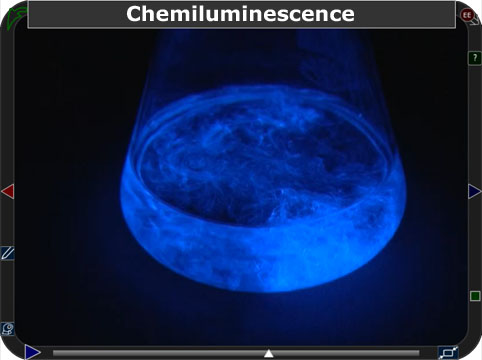
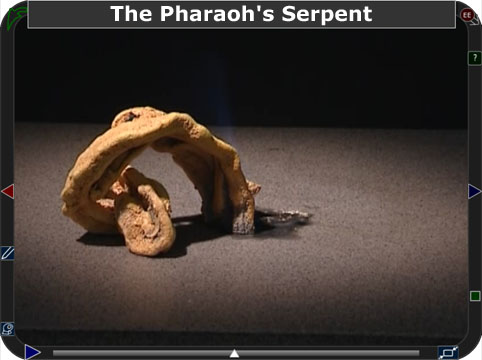
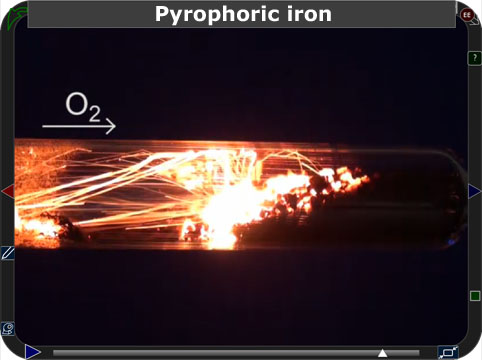
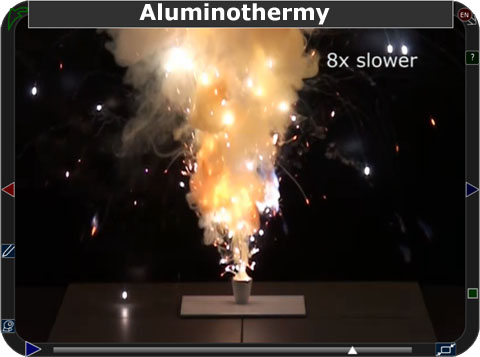
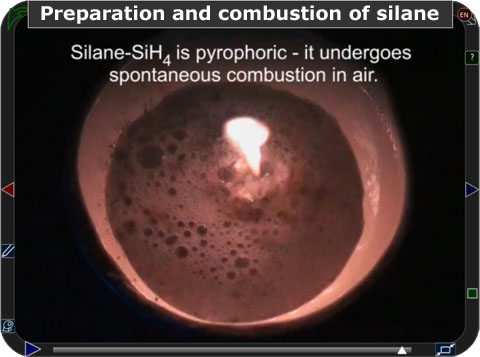

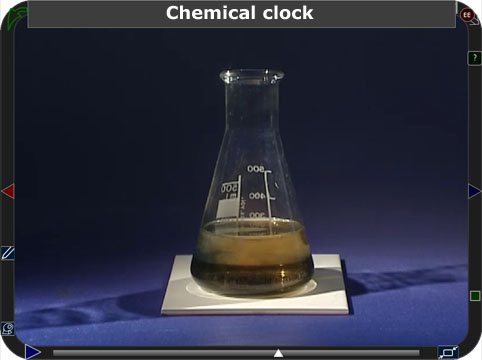
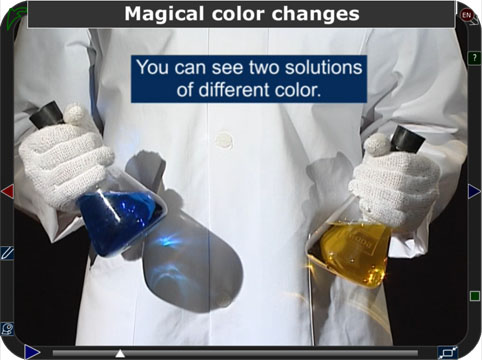
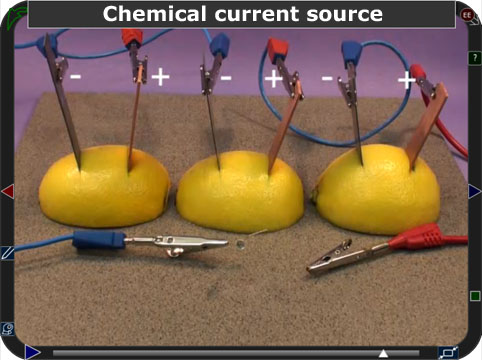
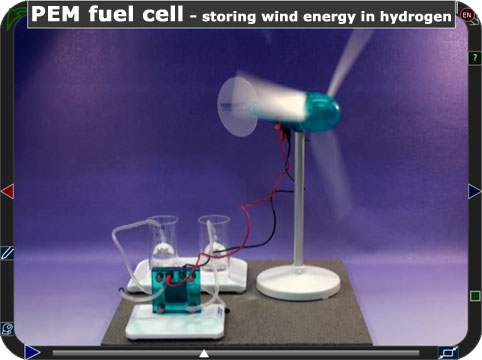
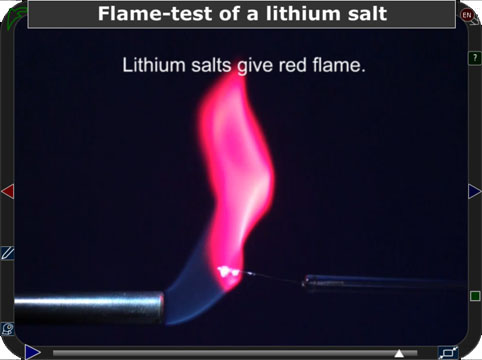
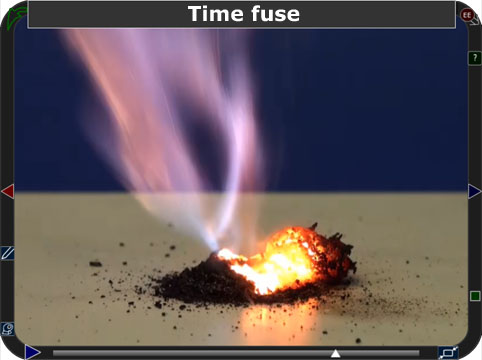
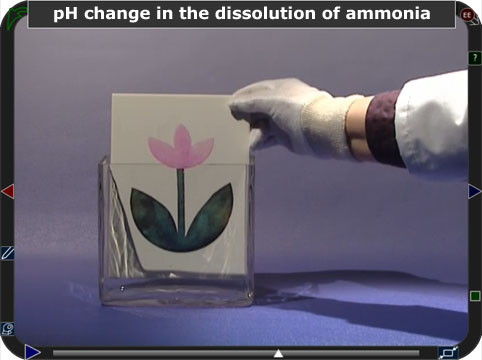
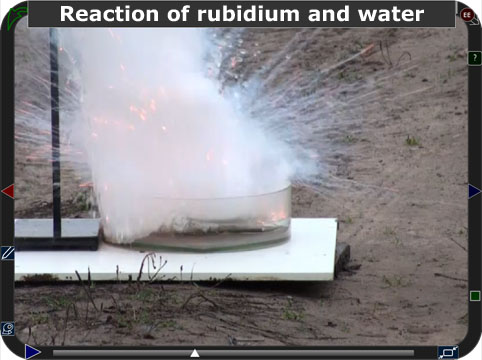
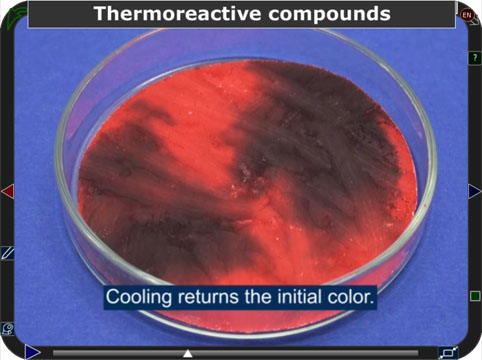


 windowpane, sweet sugars in the
fruits or the salt that makes your food tastier. Talking about salt,
have you ever wondered how sodium and chlorine combine to form the salt
(sodium chloride)? Well, it is due a process of bond formation known as
ionic bonding.
windowpane, sweet sugars in the
fruits or the salt that makes your food tastier. Talking about salt,
have you ever wondered how sodium and chlorine combine to form the salt
(sodium chloride)? Well, it is due a process of bond formation known as
ionic bonding.


